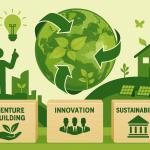The energy transition requires pace. For innovation. For adaptation. But above all: for people to work together, across departments, functions and organizations. And that is precisely where technical organizations often falter. Because no matter how good your technology is, without a connection between people the acceleration stagnates.
The problem is not in the technology
Technical organizations usually have the content in focus. There are strategies, visions of the future, investment plans. But as soon as it comes to the people who have to make that change happen, things often get murky. Who has what role? Where are competency gaps? How do we ensure alignment across disciplines?
Connection is then not a soft issue, but a strategic one.
Connecting means more than working together
Collaboration is not automatically connection. Connection is about shared language, common goals and the trust to learn from each other. That starts with people, not systems. And that is exactly where an opportunity lies for organizations to learn from trainers: not because of the training, but because of the way they look at things.
Good educators work from people and systems at the same time. They make abstract goals tangible, make connections between disciplines, and bring structure without flattening.
In practice: case of Stedin
At Stedin, we worked on an issue within the OT Infra & Telecom unit. The technology? Complex. The context? Fast-moving. But what the real challenge was: ensuring that people from different areas of expertise – architects, engineers, planners, project leaders – could contribute together to a future-proof telecom network.
Among other things, we developed:
- Competency profiles and training frameworks
- Clear end terms per role
- A shared language across disciplines
- On-boarding training to get new colleagues connected right away
The difference was not in the content, but in how we connected that content to practice and to people. In how we connected technology, education and organization. And that worked because from day one we worked from connection.
“If the job gets harder than average, I bite into it and make sure it gets off the ground.”
– Christa Wouda, DIO Academy
A different pace requires a different approach
Today’s challenges cannot be solved with yesterday’s structures. Those who want to accelerate must dare to connect. Not just on paper, but between people. And in this, technical organizations can learn a lot from the way trainers work: with attention for structure as well as for culture. For content as well as for interaction.
Because only when those worlds really come together will there be movement.



